This article won’t just be a list of dry definitions. We’ve got real PR examples you won’t have seen elsewhere, insights from on-the-ground PR specialists, and up-to-date information on what PR means in 2024.
What is Public Relations?
At its core, public relations is all about creating and promoting content that makes your business favourable in the eyes of its target audience. PR generates positive publicity around your brand’s:
Products
Services
Campaigns
Accomplishments
Ethos
Corporate social responsibility
Unique value proposition
Instead of just touting how great you are, successful PR focuses on creating audience-relevant content that subtly promotes your business.
The goal? Building brand credibility, shaping your company narrative, and getting in front of your target audience. When done right, PR establishes your business as a thought leader that customers want to buy from.
Public relations is most commonly a form of earned media – meaning it isn’t paid for, but instead won. There are a whole range of PR channels that your business can earn coverage through, including:
PR distribution |
Example |
News publications (digital and print) |
Wall Street Journal |
Websites/blogs |
Hubspot |
Newswires |
PR Newswire |
News agencies |
Associated Press |
Social media |
Influencer collaborations (i.e. Charli D'Amelio, “Tube girl” etc.) |
Television |
CNBC |
Radio |
Washington’s Top News |
Podcasts |
The Daily |
A Formal Public Relations Definition
So, what does public relations mean? We’ve given you a simple PR definition above, but for a more formal explainer, read what PRSA has to say:
“Public relations is a strategic communication process that builds mutually beneficial relationships between organizations and their publics.”
To understand the true meaning of PR, keep on scrolling 👀
What are the different types of public relations?
The term “Public relations” means different things to different people. We turned to X to see how PR specialists and marketers define PR, and noticed that industry professionals typically refer to three different types of PR:
Digital PR
Traditional PR
Link building
When professionals talk about public relations online, they’re usually referring to one specific subsection: Digital PR.
What is “Digital” PR?
Digital PR is the practice of boosting positive brand awareness online. It’s a promotional strategy which borrows from traditional PR (e.g. building relationships with the media) and digital marketing disciplines, including:
Content marketing
Influencer marketing
SEO
Social media
Content creation
Design
One of the marketing industry’s most prolific thought leaders, Rand Fishkin, turned to 300+ of his followers to get a clearer definition of digital PR.
He asked his followers "How do you define the term 'Digital PR'?" via a Twitter/X poll, giving them the following three options:
- A) Traditional PR online: All the bits of traditional PR, but targeted at online sources, formats, & audiences
- B) Digital outreach: Coverage-seeking outreach focused on digital publications
- C) Fancy "Link building": Mostly just "link building" with a more palatable name
The results were close, but most marketers and PR professionals defined digital public relations as “Coverage-seeking outreach focused on digital publications” (38.7%), as opposed to “Fancy link building” (24.6%) or “Traditional PR online” (36.7%).
So, if that’s the definition of digital PR by consensus, what does “traditional public relations” mean?
What is “Traditional” PR?
Traditional PR is defined by “non-digital” tactics such as media networking and creative advertising, with the view to earning coverage in “old media” outlets, including television networks, radio stations, and print publications.
Tricia Harte Miller, Director of Digital PR at Digital Third Coast, has created a handy venn diagram to help PR and marketing professionals understand the similarities and differences between traditional and digital PR.
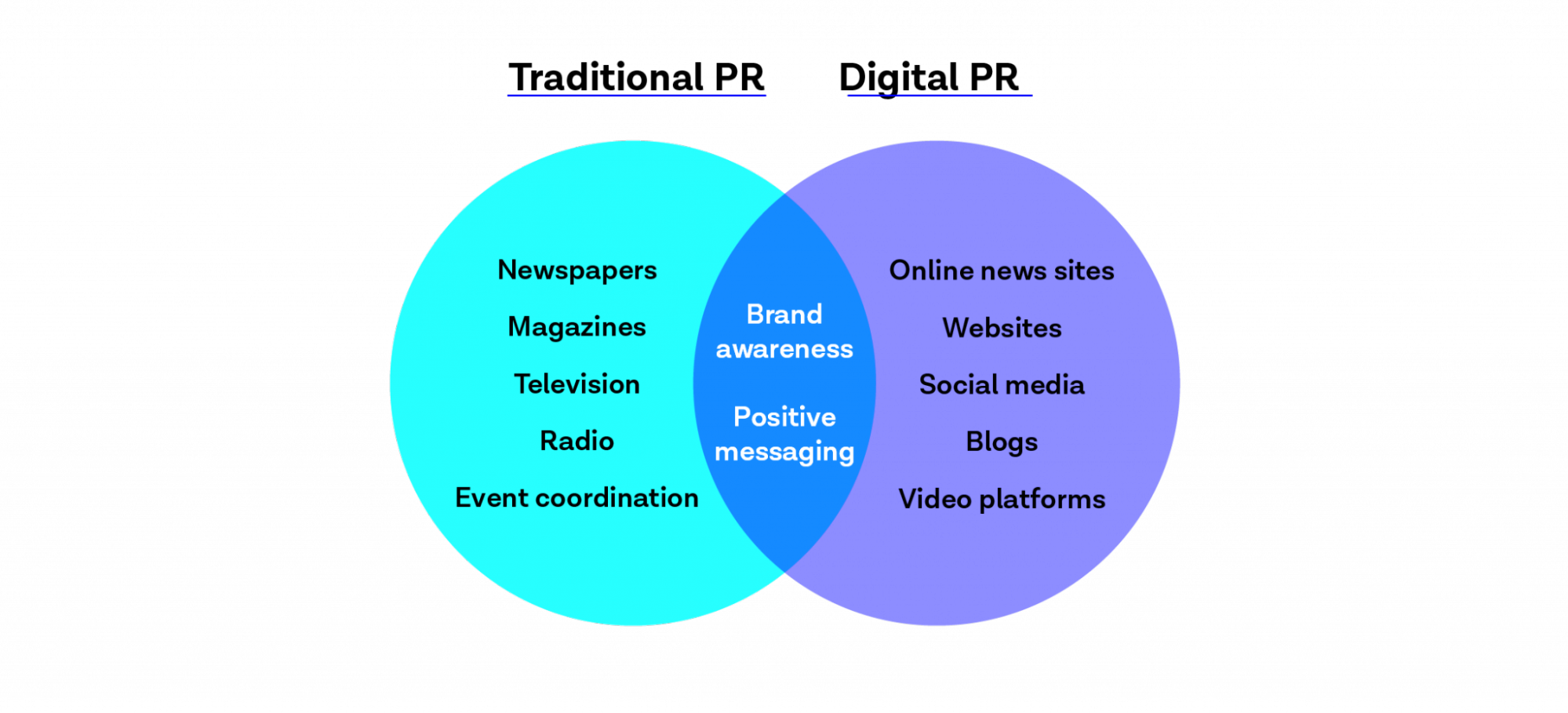
What is the Difference Between Digital and Traditional PR?
Once upon a time, PR was all about who you knew, and how good you were at networking. Because tracking PR performance was tricky – if near impossible – the ultimate goal was to make a splash through creative advertising and get as many eyeballs on your brand as possible. If you’re thinking: Mad Men, then you’re about right.
Digital PR has afforded us the opportunity to be more subtle in our promotional activities (e.g. influencer marketing) and make more informed decisions, since it’s much easier to measure and scale using real data.
But certain digital PR practices have scaled a little too much. With the advent of new tech, digital PR pros realized they could automate their media relations and pitching activities, but that came at the cost of declining coverage. Now they’re coming full circle, and embracing elements of traditional PR:
Scaled outreach is out. Relationship building is back in.
Over the last 15 years, we’ve asked thousands of journalists what they want from PR pros via our State of the Media report. And every year they say the same two things: make your media pitch relevant and quit spamming me. After years of blasting out the same pitch to hundreds of journalists, PR pros are spending more time carefully selecting the right journalists and focusing on building better ongoing relationships. The PR experts of yesteryear had no choice but to play the long game… it turns out they were on to something.
Relevant publications are trumping major outlets
Rather than focusing all their energy on pitching mainstream publications with large reach and authority, many digital PR professionals now seek coverage in niche, topic-relevant outlets. Their aim? To get closer to their potential customers. This mirrors traditional PR tactics, where splashy awareness campaigns were complemented by targeted advertorials in niche consumer publications. Here’s an example of just that from Chevrolet in 1968, featured in the trade magazine: Popular Mechanics…
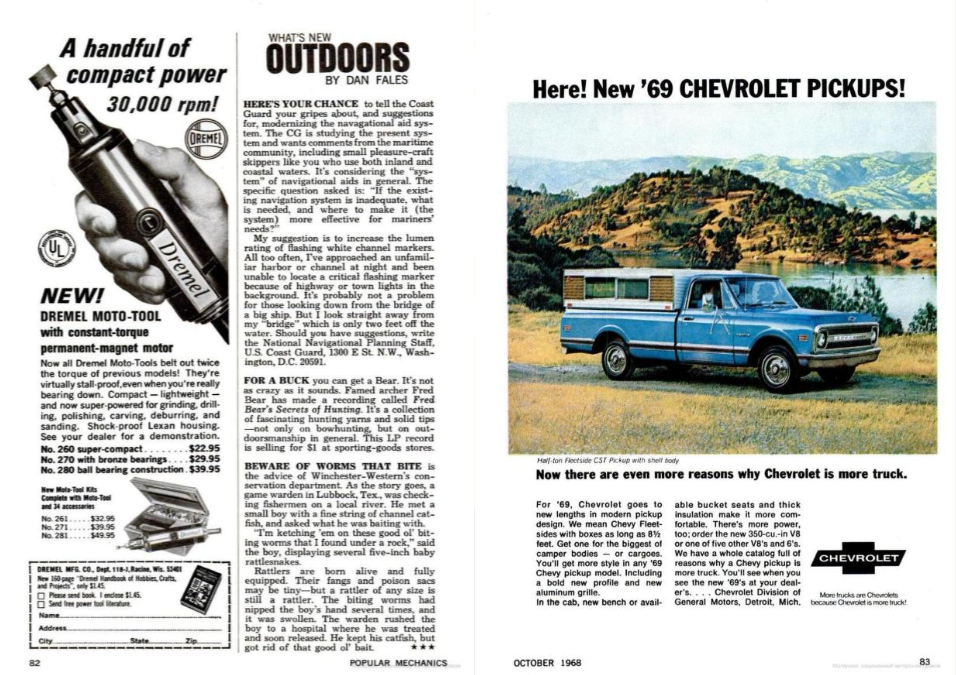
What is the Difference Between Digital PR and Link Building?
Link building is fundamentally an SEO practice, where the end goal is to drive website traffic.
Digital PR is a different beast.
While digital PRs are often targeted on their ability to drive rankings, links, and traffic, that isn’t necessarily their end goal. These metrics usually ladder up to wider objectives like building positive brand associations, awareness, and authority.
When done properly, link building can yield great results, but all too often it involves shady practices like link buying – where, surprise surprise, quality isn’t always the top priority. Guest blog requests and link exchanges often fall under the link building umbrella, and somewhere in between the two sits sponsored content.
Link building is far more of a transactional process, and the “Links for links sake” mentality is rife. For this reason, link building strategies usually involve replicable and scalable tactics. Link builders routinely spam hundreds of contacts with the same, generic link request, and usually pick up a few references from low quality sites.
But landing links in authoritative media outlets via templatized, scaled outreach is virtually unheard of in 2024. The only way to generate legitimate coverage by means of outreach is to create unique PR ideas and pitch them to relevant people.
In other words, when it comes to digital PR the stakes are higher, and quality content is paramount.
What Do PR People Do?
Being a PR specialist is like being an ambassador, storyteller, translator, and firefighter all rolled into one.
Ambassadors
Just like an ambassador represents their country to the world, a public relations professional either acts as an ambassador for an organization, or trains others to be one. Their job is to shape positive relationships with customers, investors, employees, and the media.
Example of PR ambassadorship:
PR professionals coach and prepare a company's subject matter experts (SMEs) for publicity through interviews and media training sessions. Then, they go to press with this expert commentary in the hopes of securing positive coverage.
As an example, Fery Kaszoni, founder of Search Intelligence pitched his client, the nutrition and fitness brand Bulk, to provide expert commentary on a trending story surrounding Coldplay's Chris Martin and his one-meal-a-day lifestyle.
Kaszoni advised Bulk to weigh in with their expertise on early morning versus evening workouts, ideal morning meals, and marathon nutrition tips.
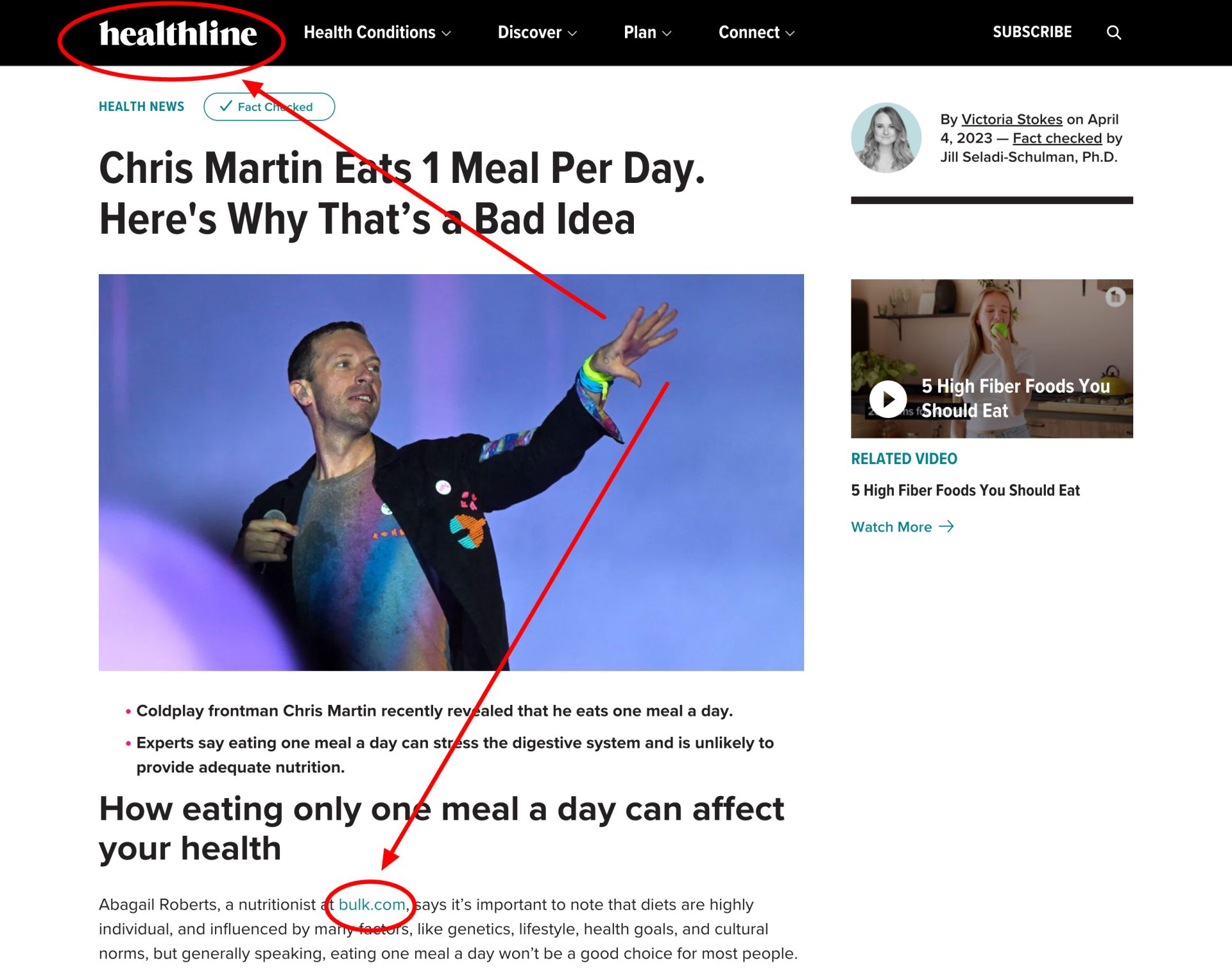
As a result, he enabled the brand to earn 40 pieces of PR coverage in national media publications, including Healthline and The Huffington Post.
Storytellers
As a storyteller, PR pros weave compelling narratives that resonate with their brand’s audiences and improve brand equity. It’s a PR professional’s job to humanize the brand by showing its authentic side.
Example of PR storytelling:
The UK cereal brand Surreal does brand storytelling brilliantly.
Go on their “About us” page, and it won’t take you long to realize that they don’t take themselves too seriously…

In fact, scroll down a little further and you’ll see that their core mission is to “Never stop playing”

And this playful storytelling comes across loud and clear in the Surreal’s PR. From wacky out of home (OOH) ads…
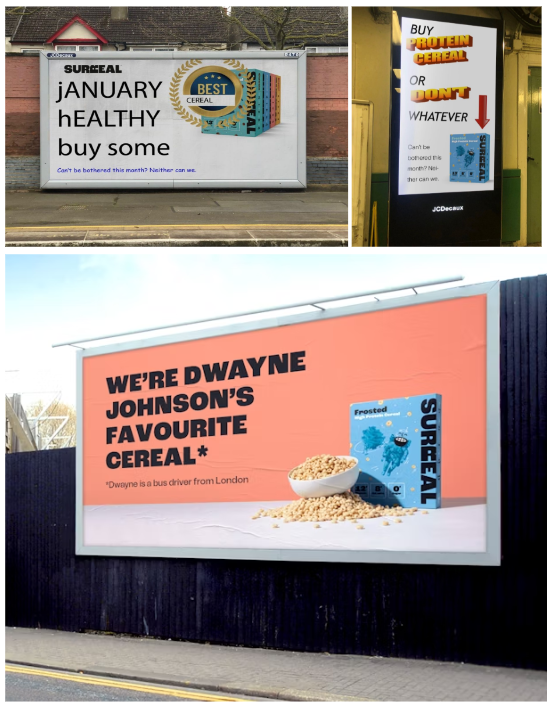
…to amusing product-led PR stories…
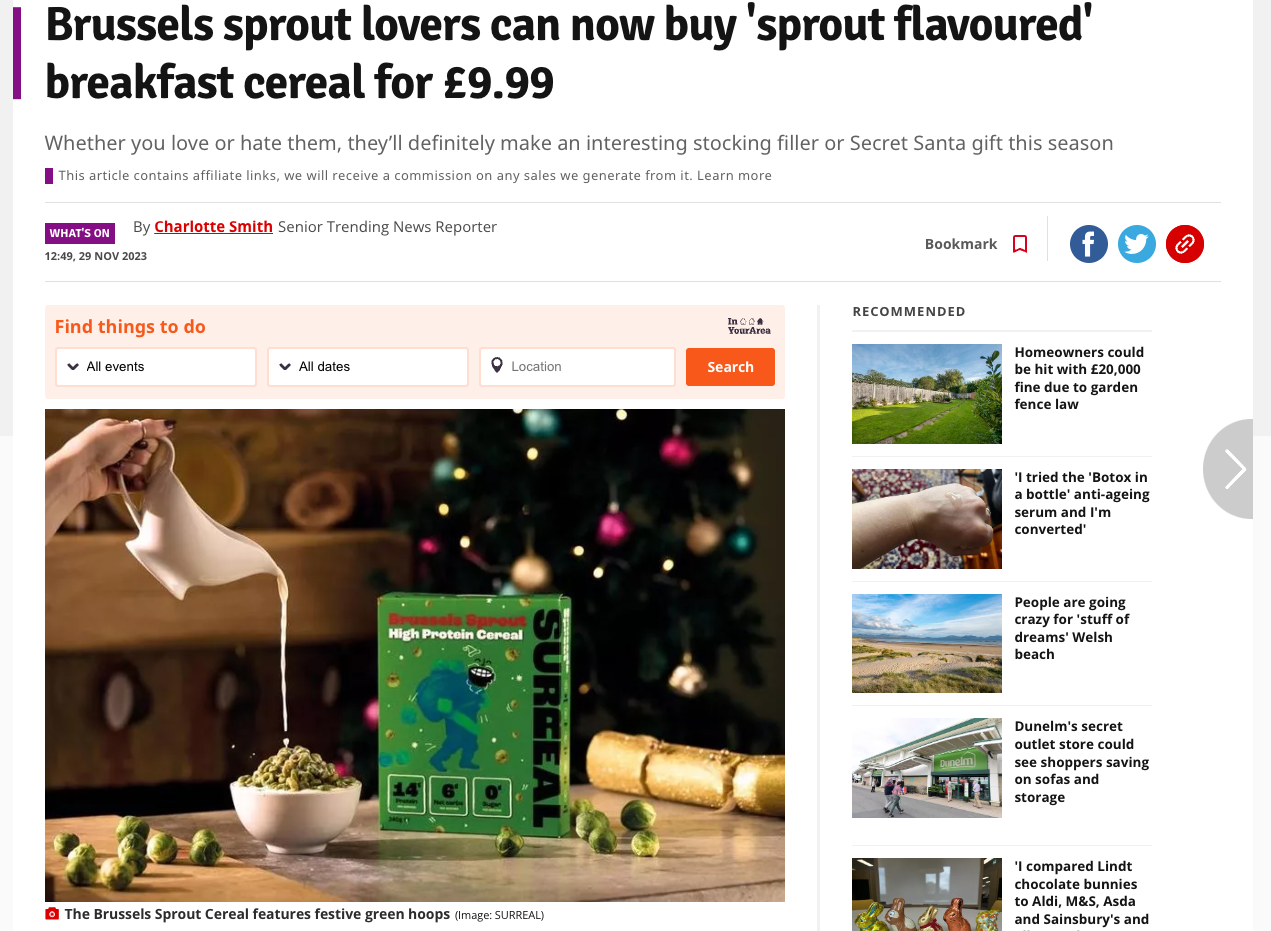
All of these PR storytelling initiatives play into the brand’s core unique selling point (USP) of being a “healthy” cereal option, while also reinforcing their mischievous mission.
Translators
PR experts are translators of complex brand messages, strategies, and goals into language that audiences can understand and get behind.
Example of PR translation:
Here’s a brilliant, retro example of Volkswagen translating a complex brand message, as found on the LinkedIn page Campaign Inspiration (check it out – it’s well worth a follow!)

The print ad succinctly translates Volkswagen’s USP of reliability, by contrasting the many technical issues and maintenance requirements of "ordinary cars" with the trouble-free owner-experience of Volkswagen models.
Firefighters
When a crisis arises, PR pros are there to reverse the effects of negative publicity through rapid-fire response and brand protection strategies.
Example of PR firefighting:
Here’s a great example of crisis firefighting from the PR department of the British grocery store, Sainsbury’s – courtesy of PR expert and Founder of 10Yetis, Andy Barr.
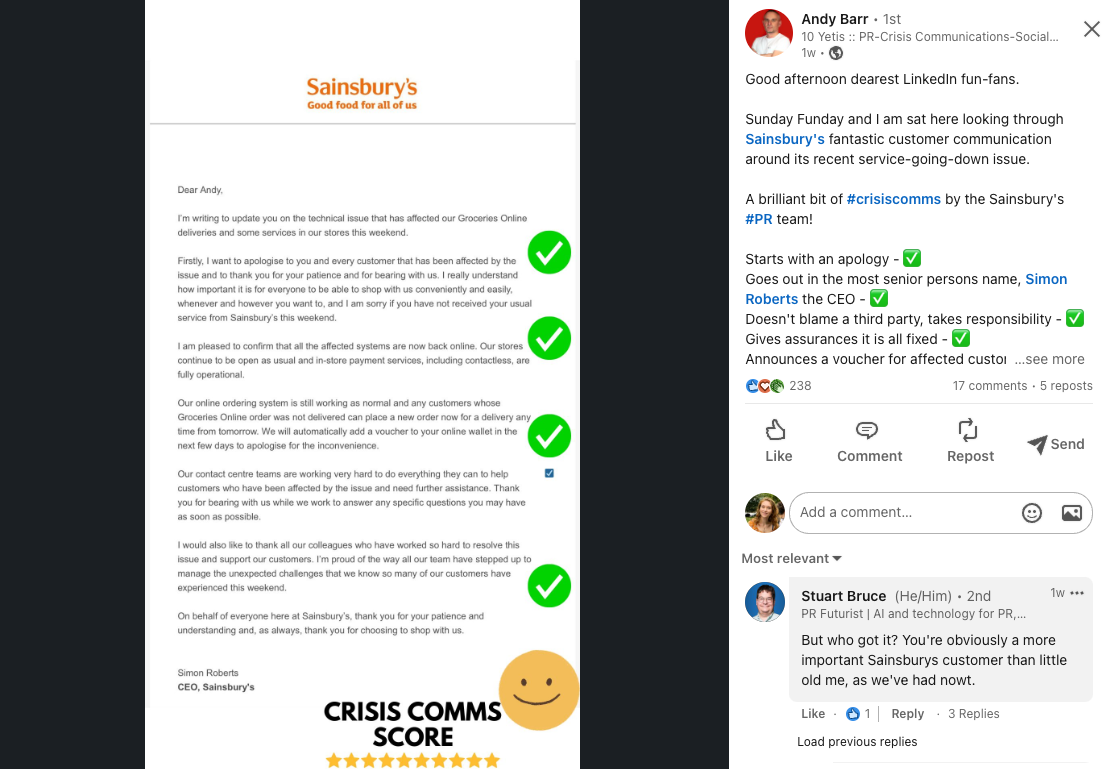
Along with many other grocery stores, the Sainsbury’s website was affected by a technical glitch which meant many customers didn’t receive their online orders.
Sainsbury’s responded by:
Issuing a formal apology from a senior person
Taking responsibility for the issue
Reassuring customers that issues had been fixed
Offering customers a complementary voucher for their next shop
What Does Public Relations Mean to Marketers & PR Pros?
PR is… Balancing Editorial Intrigue and Business Objectives
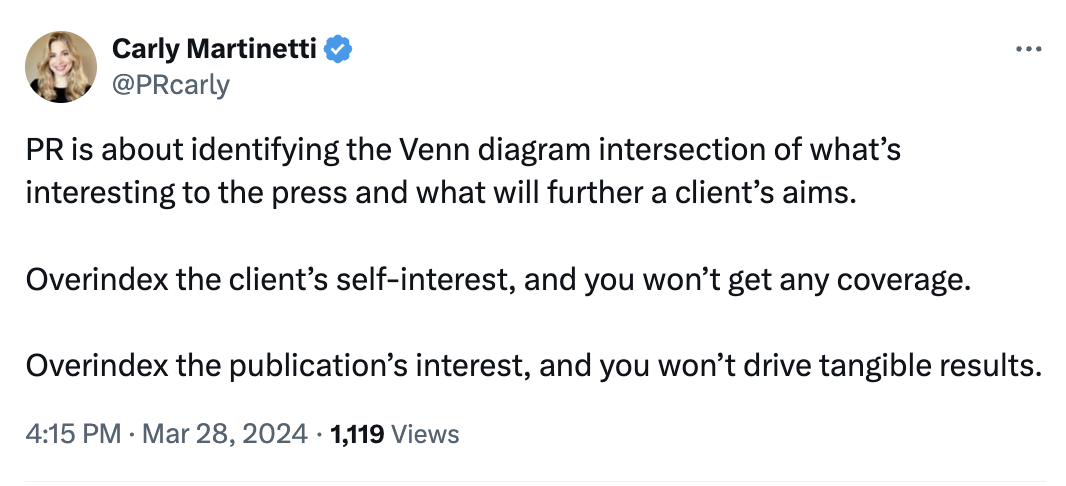
PR pro Carly Martinetti defines public relations as the art of finding the sweet spot between what the media (and its audiences) find interesting, and what furthers your brand's underlying business objectives. It's about identifying the intersection of the publication's interests and the client's interests. Go too far by pushing the brand's agenda and you won't get press coverage. But only pitch stories based on what's trendy to reporters, and you won't drive any real results for the brand. The true PR pro walks that tightrope, expertly balancing media and brand demands.
PR is… More Than Just Networking
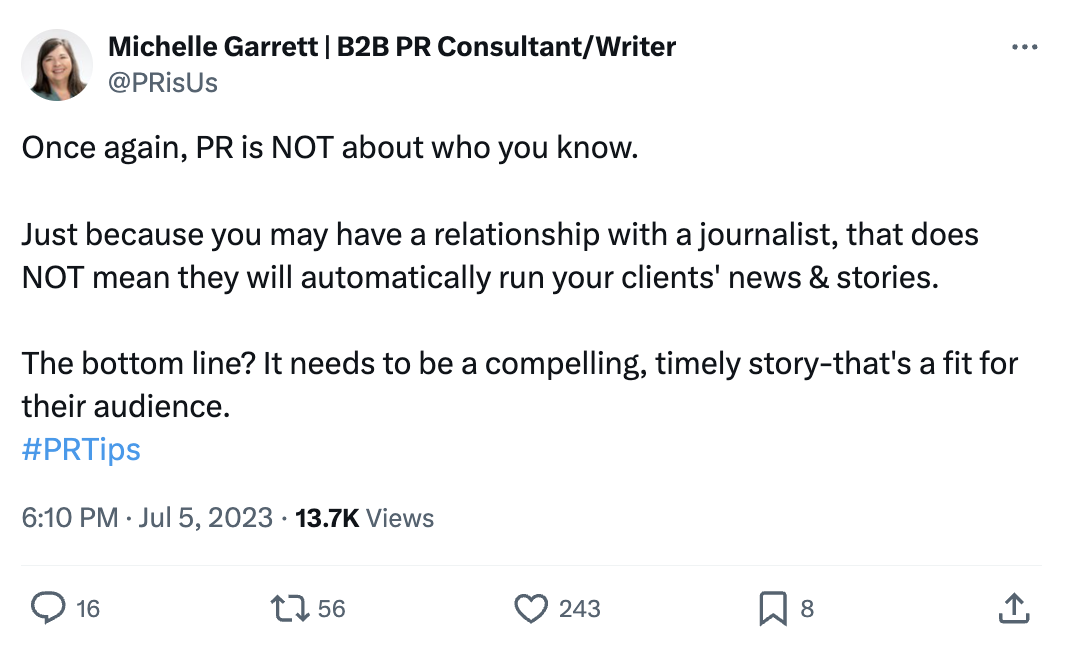
PR expert Michelle Garrett sees PR as much more than just leveraging personal connections. She warns her followers that PR is not simply a matter of "who you know" in the media world, and that journalists won’t just run your story as a favor. The bottom line according to Garrett: Personal rapport alone won't cut it if you don’t have a truly newsworthy angle. While good working relationships with journalists may get your pitch read, it won’t guarantee you coverage. That all comes down to the power of your story.
PR is… Inherently Tied to SEO
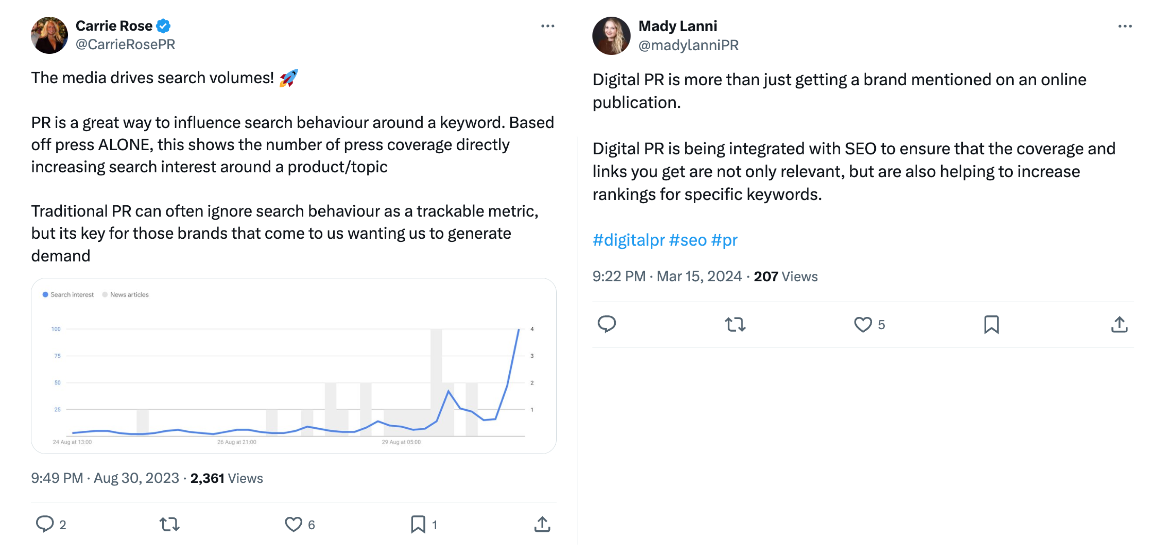
Leading PR pros like Carrie Rose and Mady Lanni define digital PR in relation to its ties to search performance. Simply put, media coverage measurably impacts search behavior –driving up demand for featured brands and influencing potential customers in the discovery phase. Brands can create search volume and demand around their products, services, or brand mission, all through digital PR. But, as Lanni points out, brands need to be deliberate with their PR, carefully choosing topics that will earn them relevant links and keywords capable of driving that new demand back to their own website.
What Are Some Examples of Public Relations?
Influencer Marketing
Influencer marketing involves partnering with popular content creators to reach new audiences authentically. A way that PR pros can harness the power of influencer marketing is through what is known as “influencer seeding”.
PR example #1: Rise at Seven seed a product to influencers on TikTok, then pitch the “Viral trend” to the media
The Rise at Seven PR specialists are firm believers in the power of TikTok for product launches – especially when it comes to B2C mass-market goods.
In fact, one of their most successful product release strategies to date involved seeding B2C products to targeted influencers on TikTok. This undertaking on behalf of mass-market clothing brand Pretty Little Thing, saw the PR agency essentially manufacture their own TikTok trend.
They selected a new product that…
- Ranked in position #1 on Google
- Had strong inventory levels…
…so that when the DIY trend began to take off, Pretty Little Thing was able to turn PR coverage into sales. The product that fit the bill was the brand’s halter-neck top, which they gifted to several content creators, following the advice of Rise at Seven.
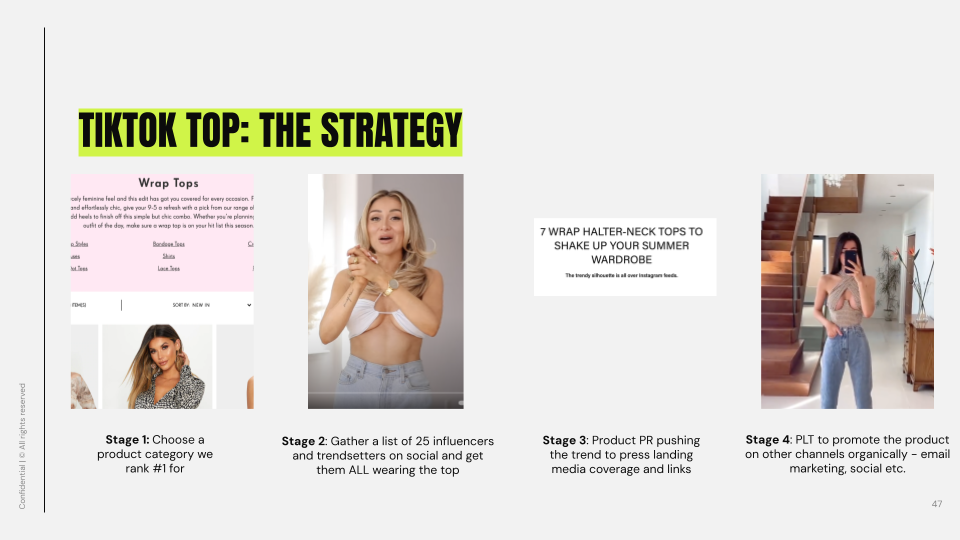
Before long, influencers were wearing the product organically and posting about it on social media.
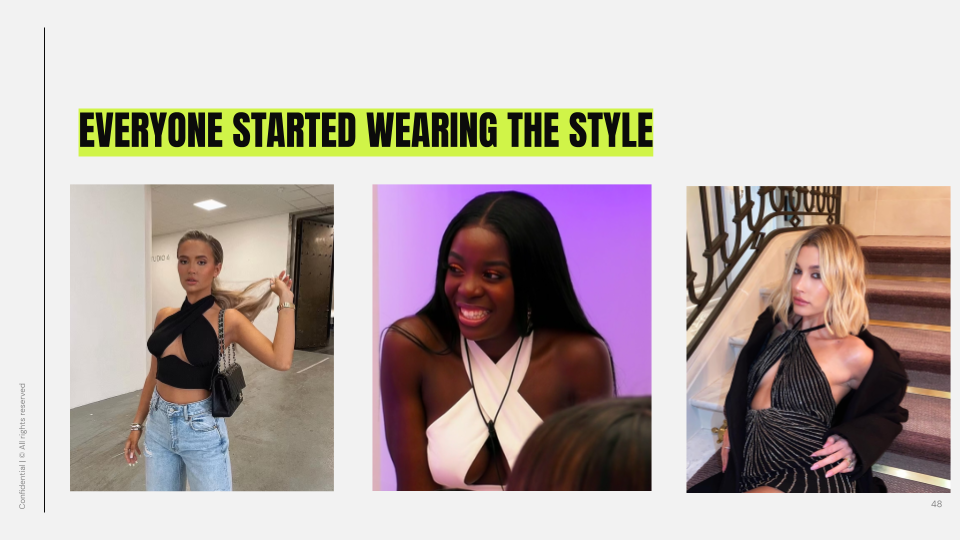
Rise at Seven compiled the resulting user-generated content into a press release about "The viral halter-neck top taking over TikTok" and pitched the story to journalists for product features and roundups, earning extensive media publicity for the brand.
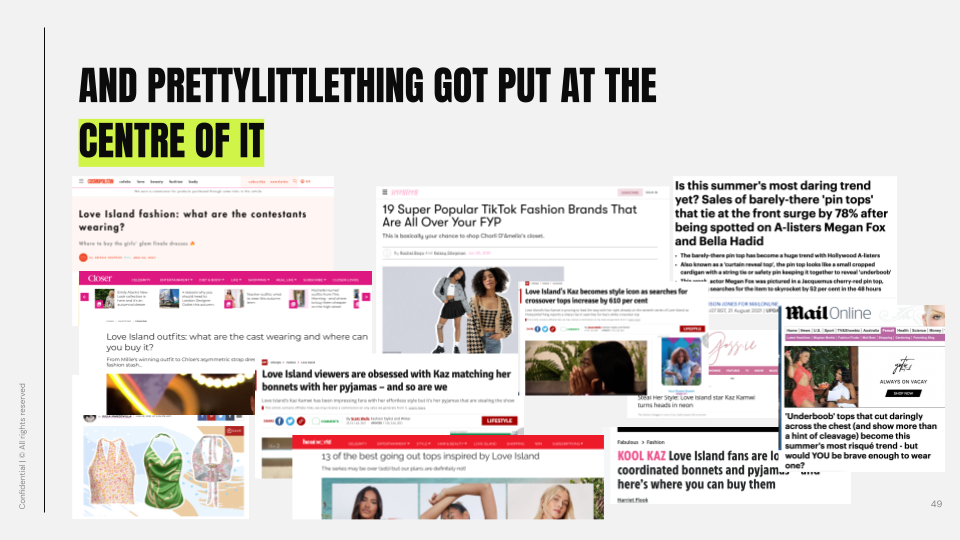
The Rise at Seven PR pros did another very smart thing to back up Pretty Little Thing’s earned media strategy.
They coordinated with the PLT brand to push the product across owned channels like email, social media, influencers (on retainer), and brand ambassadors, to further amplify the trend they’d created.
This PR strategy firmly asserted Pretty Little Thing as trend setters, rather than clout chasers.
The moral of the story? PR professionals can mastermind viral trends, PR coverage, and even sales.
Press Releases
Press releases are an incredibly valuable form of PR.
In fact, we surveyed over 3k journalists in our latest State of the Media report and found that press releases are a journalists favorite form of content to receive from PR pros. 74% of journalists prefer this type of PR vs. other formats like original research (61%) and exclusives (55%).
PR example #2: Wendy’s issues press release for new pumpkin spice frosty, and lands 394 syndications
Just in time for fall, fast food chain Wendy’s announced their pumpkin spiced frosty – and it went down a treat.
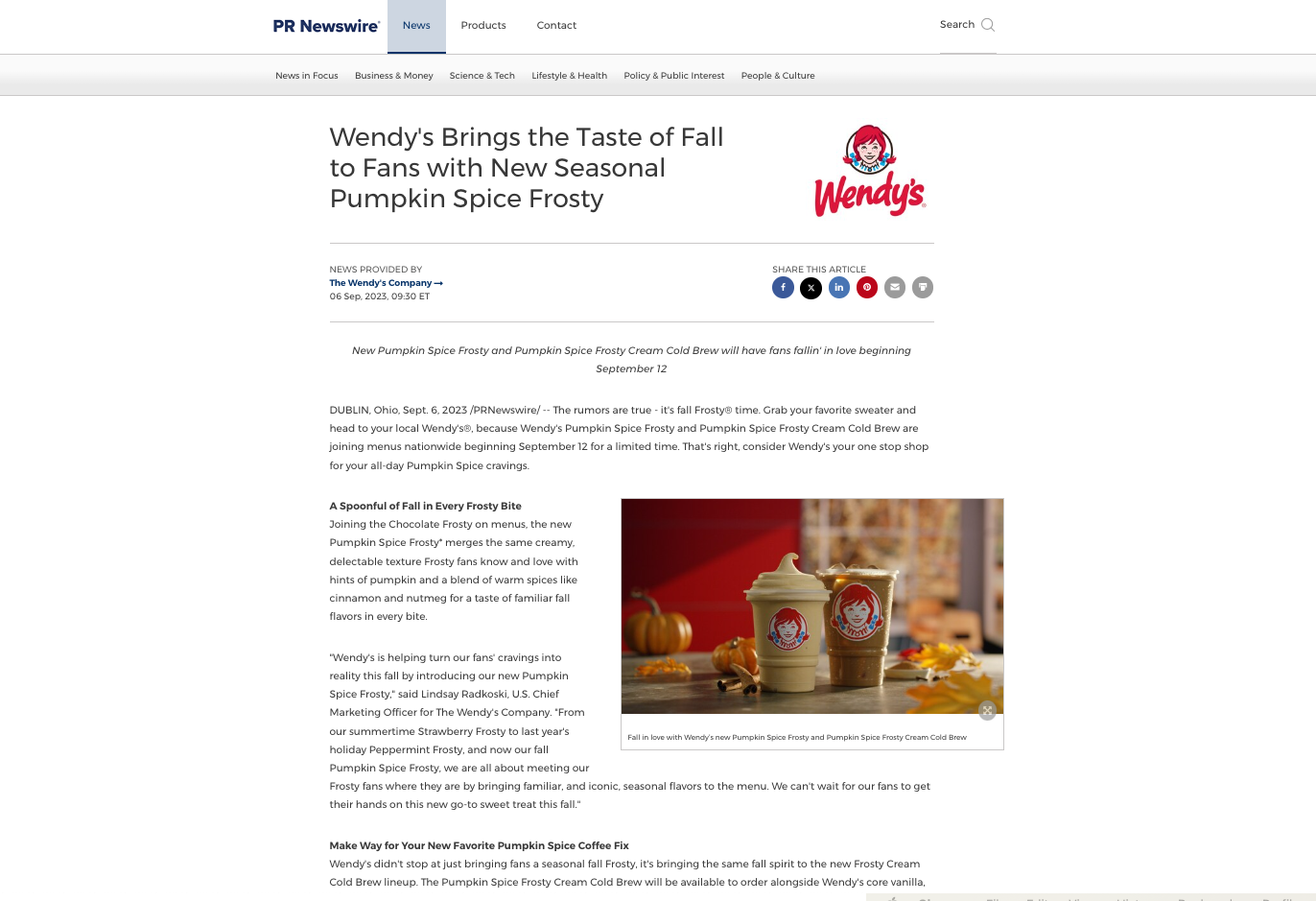
The press release featuring the announcement was distributed via PR Newswire, and picked up by 394 publications including USA Today, iHeart Radio, and Live5News, according to backlink data from BuzzSumo.
Newsjacking
Public relations definition guides tend to over-focus on traditional PR activities (e.g. press releases) and overlook opportunities brought about by new media (e.g. newsjacking). But a reactive PR strategy can give brands a unique opportunity to insert themselves into breaking news and cultural moments, earning them incremental coverage.
While the practice of newsjacking has been around for centuries, the concept was only coined back in 2011, by marketing and PR strategist David Meerman Scott. Since then, social media has done a lot to democratize news consumption and pave the way for brands to tap into viral conversations.
PR example #3: Lush capitalizes on trending scene in film Saltburn
At record speed, the bath company Lush developed and went-to-market with a bath bomb inspired by a notorious scene from film-of-the-moment: Saltburn.
Such speedy newsjacking resulted in a serious amount of coverage; driving no less than 313 mentions in online and podcast media…

And 146 links from authoritative news publications directly to Lush’s product page – according to data from Ahrefs.
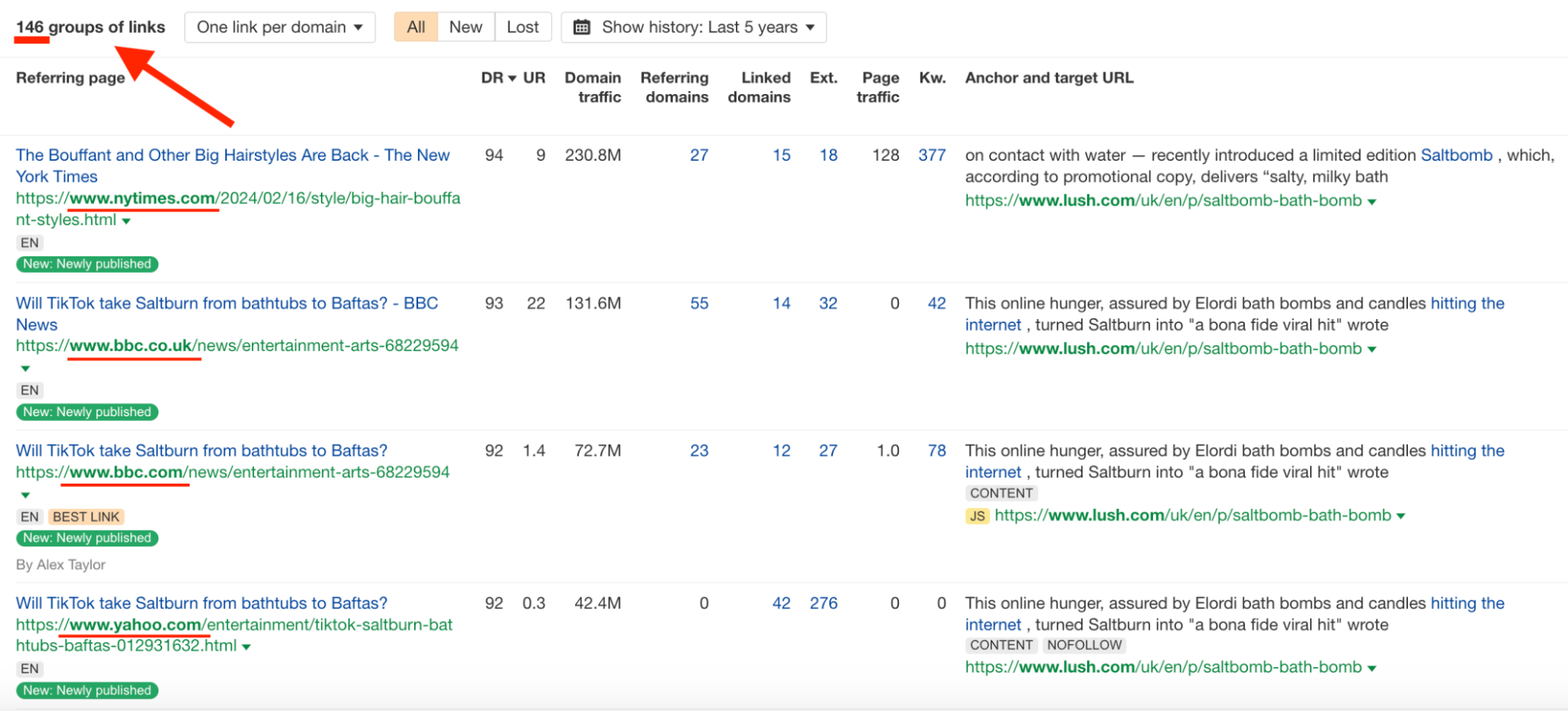
Upon reading a few of the articles, it became clear that Lush’s PR team had also gifted their new product to a series of journalists, which undoubtedly reinforced the success of their reactive campaign.
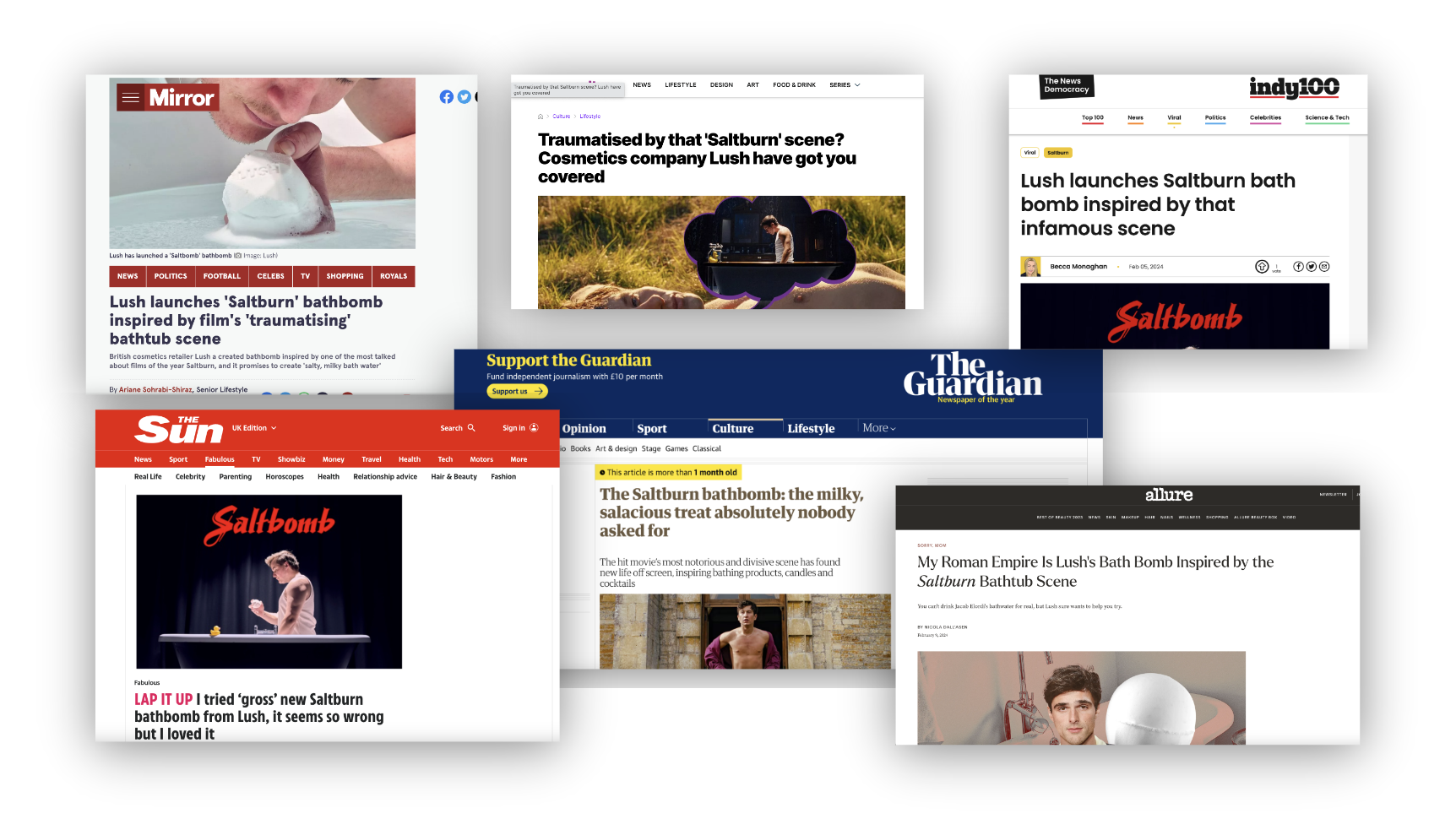
The benefit of newsjacking is that coverage doesn’t begin and end with news media. The Lush bath bomb also picked up traction on social media, leading to user-generated content and over 1k social media mentions off the back of the brand’s coordinated PR efforts, according to Brandwatch Consumer Research.
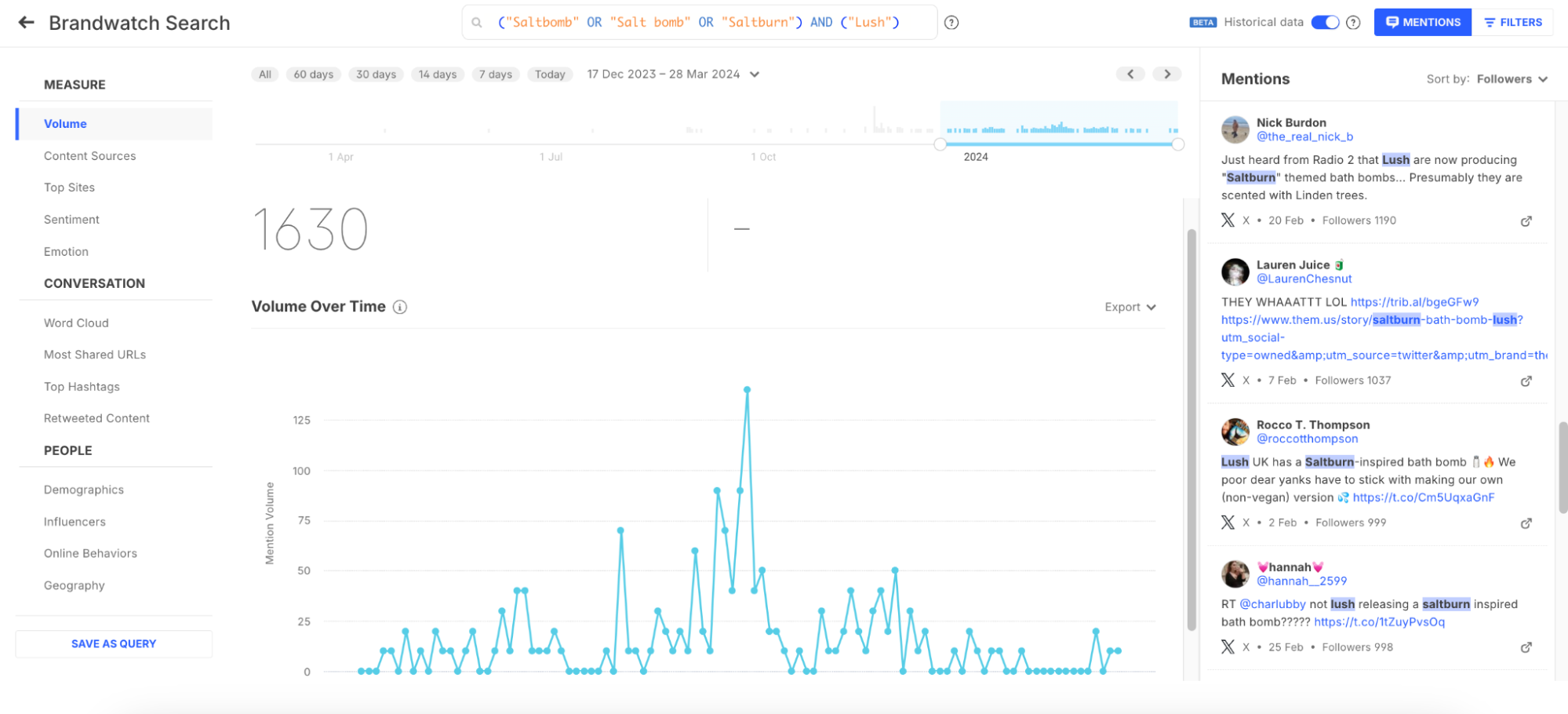
Crisis Communications
The PR definition of crisis comms is all about implementing strategies to address situations that threaten your brand’s reputation.
PR example #4: Airbase successfully navigates the Silicon Valley Bank collapse crisis
When Silicon Valley Bank collapsed in April 2023, Airbase found itself in a precarious situation, as it used SVB to process over $5 billion in annual payments for its customers. This meant a large portion of its customer payments were delayed, totaling up to eight figures. To address this crisis, which affected both their business and customers, Airbase executed a multi-pronged crisis communications approach by:
Quickly mobilizing its entire globally remote workforce to work around the clock on contingency plans
Maintaining transparent and frequent communication with customers through multiple email updates as the situation rapidly evolved
Directly addressing customer concerns like requests to move funds to larger banks
Collaborating in industry Slack groups to share strategies
Airbase ultimately used the chaos as a defining moment to bring the company's leadership team together and deliver the best customer service possible.
So, What Does Public Relations Actually Mean?
The definition of PR has evolved beyond traditional tactics like media schmoozing and press release blasting. Now, it's a fusion of old and new school techniques – running the gamut from niche advertising and relationship building to influencer seeding, reactive newsjacking, and integrated multi-media campaigns.
At its core, modern PR is about balancing brand objectives with irresistible storytelling that the media can't help but cover. It's the nuanced skill of making your business's narrative so compelling that it can trailblaze new trends and weather publicity storms.
According to Nielson, a whopping 92% of customers place more faith in earned media coverage than traditional advertising. There's simply no substitute for that level of third-party credibility. And PR isn't just about optics – it's also a financial tour de force. With an average 5:1 ROI, every dollar invested pays off, and then some. That equates to compounding gains that put other tactics to shame.
While advertising preaches at people, an on-point PR strategy lets you connect with audiences authentically and earn their trust and fandom. By getting to grips with the true meaning of public relations, brands can cut through the noise, shape perceptions, and cement themselves as the ones worth paying attention to.
To shape your own top-tier PR strategy, check out CisionOne, and tap into media monitoring, journalist contacts, social listening, and a host of other tools that can help you earn impressive media coverage.






